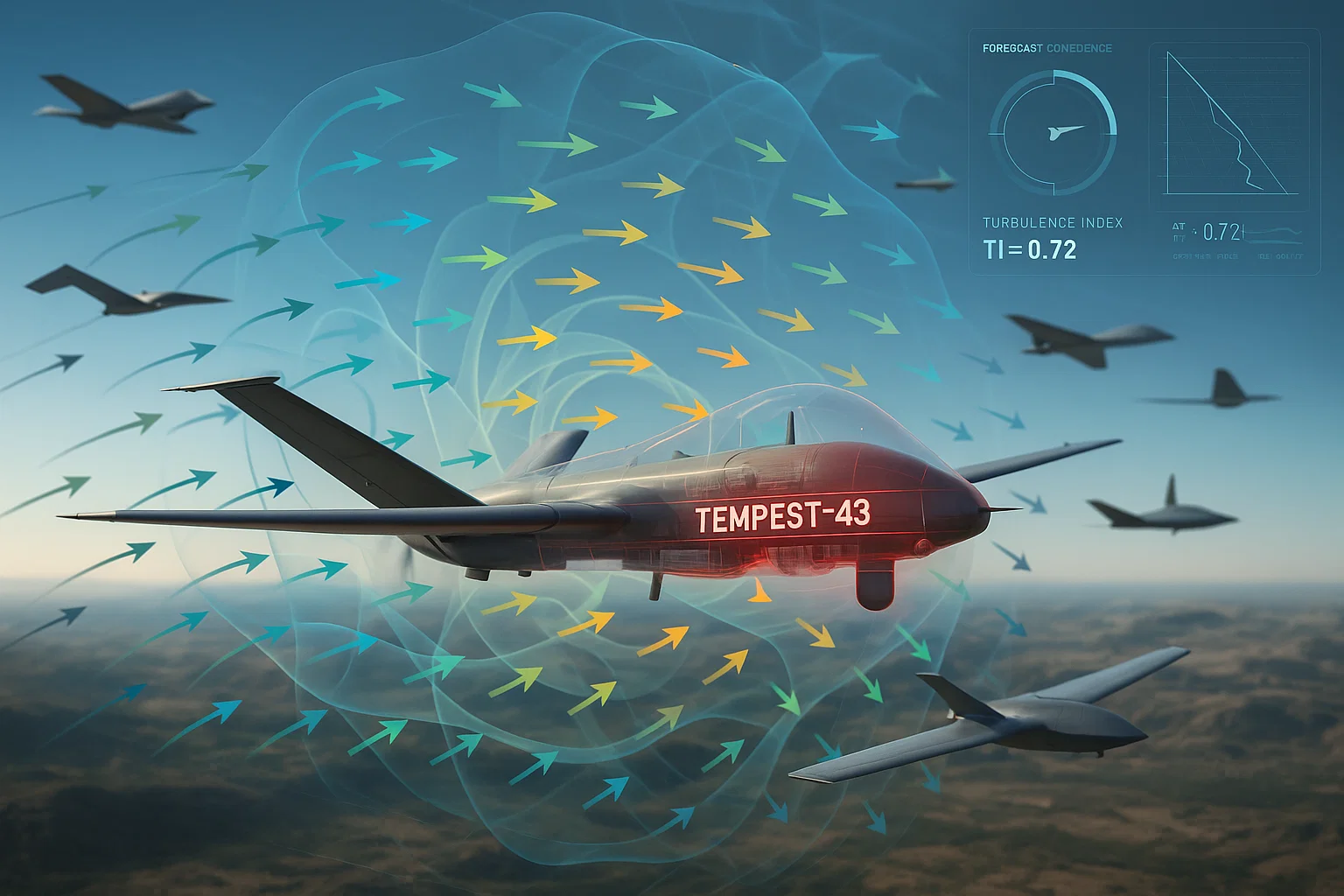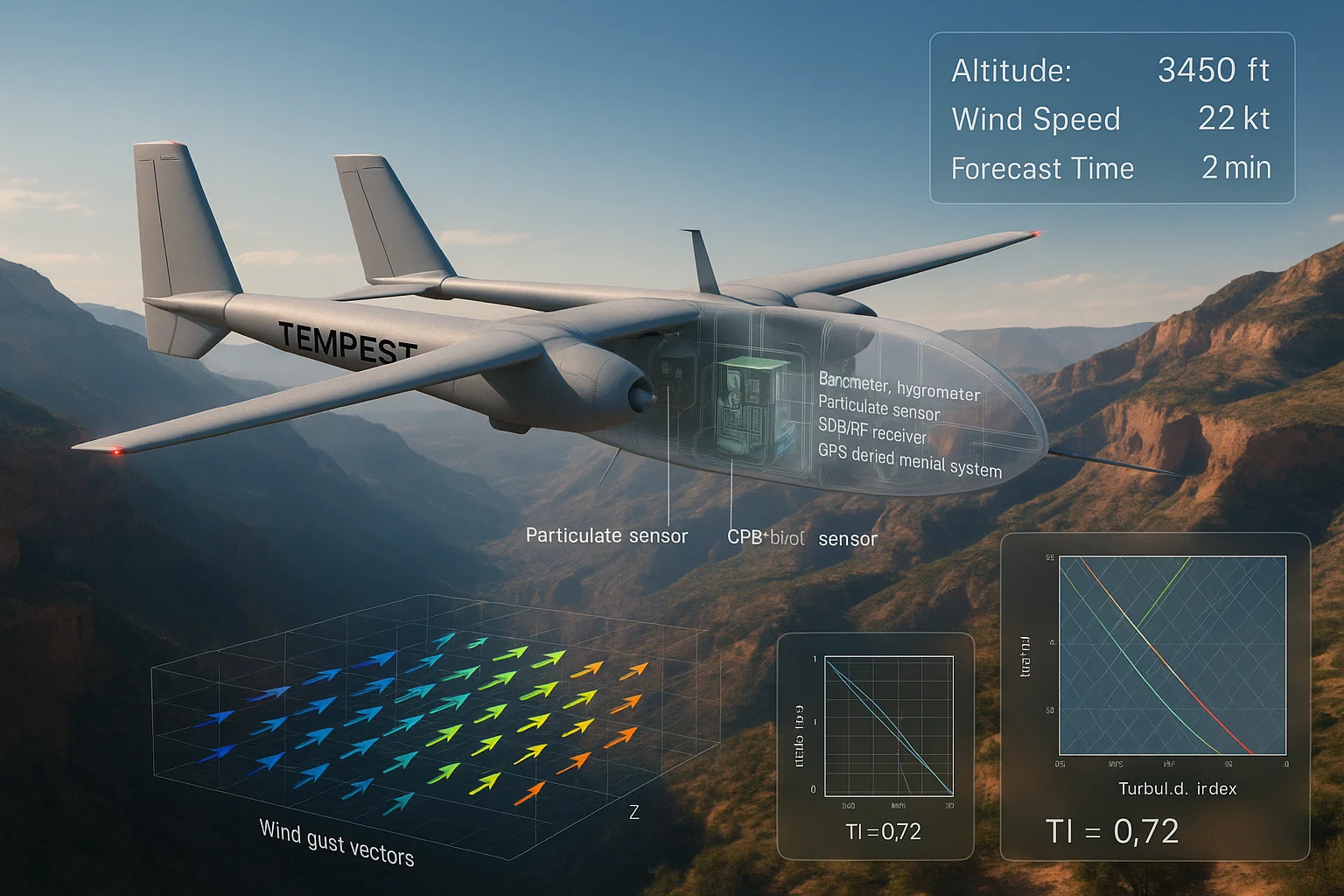
TEMPEST transforms weather-blind drone swarms into environmentally-aware systems by embedding real-time microclimate sensing and federated forecasting directly into their autonomy stack, enabling resilient operations in contested environments.
Unmanned aircraft swarms today suffer from a critical operational gap; they fly weather blind. In GPS-denied and communications-contested environments, where tactical swarms must operate autonomously, environmental hazards such as gust shear, convective turbulence, RF-propagating moisture, and sudden visibility loss routinely destabilize flight paths, degrade sensor effectiveness, and sever links across the swarm.
A 2021 Nature Scientific Reports study found that small commercial drones average only 5.7 hours of usable flight per day due to weather limitations, with as little as 2.0 hours during daylight. DoD systems are no better.
A 2020 DoD Inspector General audit of the MQ‑9 program concluded weather support was insufficient even for centralized ISR missions, and recent swarm demonstrations such as Golden Horde and OFFSET have not integrated real-time weather intelligence into autonomy stacks.

TEMPEST is built on Post Quantum Labs’ proven autonomy and cybersecurity stack which combines CNSA 2.0–compliant post-quantum encryption for stealthy low-latency communications, multi-agent reinforcement learning for adaptive role switching, and graph neural networks for real-time sensor data fusion. This stack has over 15,000 hours of development, with core elements validated in fielded prototypes and commercial deployments.
TEMPEST adapts these technologies to include federated forecasting and autonomy-aligned microclimate perception, creating a new capability tier aligned with emerging AFSOC and AFRL swarm concepts.
For more information, technical briefings, or contracting opportunities, please contact Post Quantum Labs at [email protected].